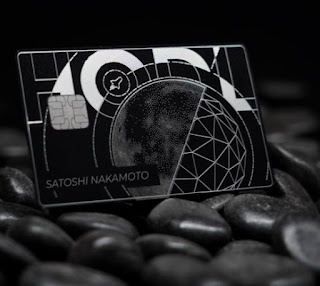
Bitcoin (BTC) holders face a big problem: using their assets without sacrificing security. Moving tokens across different platforms is risky and can result in fund loss or exposure to bad actors. This problem highlights the need for secure cross chain communication and the solutions offered by platforms like Zeus Network.
Current Challenges to Web3
Since Bitcoin’s inception, the blockchain space has evolved greatly with many networks emerging to serve different needs and communities. Despite this growth, one big problem remains: lack of interoperability between networks. Users face restrictions because decentralized applications (dApps) are usually limited to a specific blockchain network and thus fragmented liquidity and subpar user experience.
This fragmentation is a result of relying too much on a single blockchain to meet all needs. Interoperability is the solution to these problems, it scales and accommodates the different needs in the blockchain space.
Limited Options for BTC Holders
For BTC holders, the options to use their assets on the native Bitcoin chain are limited. The Bitcoin network is good for secure, decentralized transactions but lacks the infrastructure to support more complex financial services like DeFi and a robust dApp ecosystem. Although there are emerging Bitcoin Layer 2 solutions like the Lightning Network, these are still facing slow adoption and limited usability compared to more established ecosystems.
Solana: Monolithic as a Solution
Solana has a solution to these problems with its monolithic architecture. This consolidates execution, data availability and consensus into one framework and allows for seamless integration and a unified user experience across its ecosystem.
Zeus Network, with years of experience building on Solana, aims to position Solana as the Layer 2 solution for all blockchains. By using the Solana Virtual Machine (SVM), Zeus Network is leveraging Solana’s speed, low transaction fees and user friendly interface. This makes Solana the best choice for mass consumer adoption and a central hub for interactions across different blockchains.
Introducing Zeus Network
Zeus Network is building the cross chain infrastructure. Backed by the Solana Foundation and with significant funding, Zeus Network has made great progress in the blockchain space. Their first dApp APOLLO has already attracted over 40,000 users from 162 countries in just 4 days since testnet launch.
Zeus SVM-Empowering Infrastructure
At the heart of Zeus Network is its SVM-empowering infrastructure that connects Solana to other blockchains. This infrastructure has two main parts: the Zeus Program Library (ZPL) and the Zeus Layer. ZPL is a set of SVM programs and a client SDK on top of the Solana Virtual Machine.
It provides a verifiable interface for developers to build on top of Zeus Network to bridge the gap between blockchains. The Zeus Layer is a peer to peer network of Zeus Nodes that enables secure and fast cross-chain communication.
ZPL: Zeus Program Library
The Zeus Program Library is the culmination of years of work, research and development by the Zeus Network team. Built on top of the Solana Virtual Machine, ZPL is a pluggable and programmable layer that allows developers to build or integrate applications seamlessly.
Its modular and extensible architecture allows developers to add SVM-empowering functionality to their dApps and protocols, to bridge the gap and secure. ZPL can securely process and verify transactions across multiple blockchains, it’s a must have tool for developers in the decentralized space.
ZPL-Asset
A ZPL-Asset is an asset empowered by Zeus Network. It’s an asset that can be transferred from one blockchain to another, both fungible assets (cryptocurrencies) and non-fungible tokens (NFTs). ZPL-Assets are verified by the Zeus Layer, so they are authentic and intact during the transfer. They are also customizable, protocols can set fees and conditions for the ZPL-Asset, so they can provide tailored solutions for specific use cases.
ZPL-Assets for BTC Holders
One of the biggest benefits for BTC holders is to use their tokens on Solana through ZPL-Assets. For example, zBTC allows users to deposit BTC on the Bitcoin blockchain and receive zBTC on Solana, so they can participate in DeFi activities like lending and borrowing without moving their Bitcoin.
zRuneX allows for fast and low-cost trading of Runes on Solana to solve the congestion and high fees on the Bitcoin network. zOrdX allows for seamless NFT trading of Ordinals on Solana marketplaces, a robust platform to engage with the NFT space.
Real-World Use Case: APOLLO dApp
APOLLO dApp is a great example of how Zeus Network allows BTC holders to bring Bitcoin liquidity to Solana. APOLLO has a global user base so BTC holders can use their assets securely and efficiently. By using APOLLO, BTC holders can deposit their BTC on the Bitcoin blockchain and receive an equivalent amount of zBTC on Solana. This opens up a world of DeFi on Solana while keeping the security of the Bitcoin blockchain.
Conclusion
As Zeus Network continues to innovate, its role in making Solana the L2 for the decentralized future gets bigger and bigger. The Zeus SVM-enabled infrastructure is the backbone connecting Solana to multiple blockchain ecosystems. With the Zeus Program Library, developers get a transparent and verifiable interface to tap into the power of the Solana Virtual Machine to create and integrate dApps.
ZPL-Assets also enables secure and verifiable asset transfers between different blockchains, opening up new possibilities for DeFi and asset management. As Zeus Network is going to apply ZPL to BTC, Runes, and Ordinals in Q3 2024, the possibilities for BTC holders to use their assets securely and profitably without moving them is huge, a big step forward in blockchain interoperability.
from ZyCrypto https://ift.tt/hRZrK1q




0 Comments